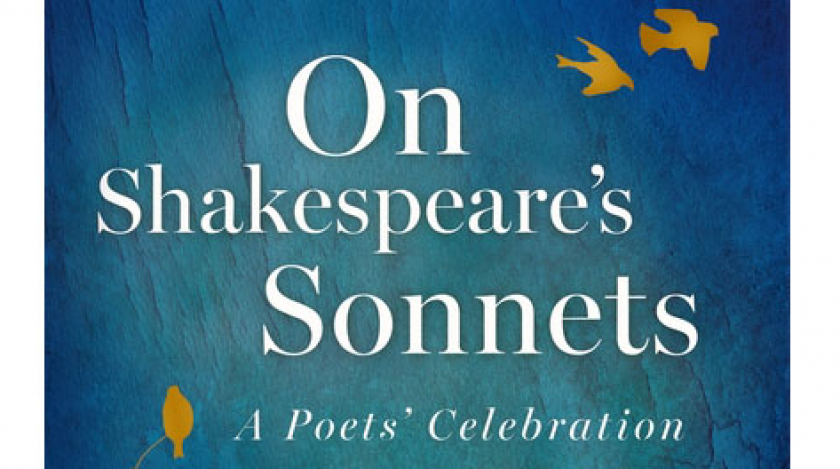
- ©
- Michael Potiker
Biography
Paul Muldoon was born in Portadown, County Armagh, in 1951.
He read English at Queen's University, Belfast, where he was taught by Seamus Heaney. His first collection of poems, New Weather, was published in 1973, while he was still at university. He worked for the BBC in Belfast until 1986, before taking up a writer's residency at Cambridge University. He moved to the USA shortly afterwards to teach at Columbia and Princeton universities. He is Howard G.B. Clark Professor of the Humanities and Creative Writing at Princeton University. He became Professor of Poetry at Oxford in 1999, succeeding James Fenton, and is President of the Poetry Society in London.His poetry collections include Why Brownlee Left (1980), Quoof (1983), Madoc: A Mystery (1990), which won the Geoffrey Faber Memorial Prize, The Annals of Chile (1994), which includes an elegy to the artist Mary Farl Powers and won the T. S. Eliot Prize, and Hay (1998). New Selected Poems 1968-1994 (1996) won the Irish Times Irish Literature Prize for Poetry. He is editor of The Faber Book of Contemporary Irish Poetry (1986) and wrote the libretto for Shining Brow (1993), an opera about the life of the architect Frank Lloyd Wright with music by Daron Aric Hagen. He delivered the Oxford Clarendon Lectures in 1988, published as To Ireland, I (2000), and his translation of poems in Irish by Nuala Ní Dhomhnaill was published in The Astrakhan Cloak (1992). The End of the Poem: Oxford Lectures in Poetry (2006), contains the lectures he delivered during his tenure as Oxford Professor of Poetry.
Moy Sand and Gravel (2002), was shortlisted for the T. S. Eliot Prize and won the 2003 Pulitzer Prize for Poetry.Paul Muldoon lives with his wife, the novelist Jean Hanff Korelitz, and their two children in the US. His tenth poetry collection, Horse Latitudes, was published in 2006 and in 2007, he became poetry editor of New Yorker magazine.
His recent poetry collections include Plan B, illustrated by the photographer Norman McBeath (2009); Maggot (2010); and One Thousand Things Worth Knowing (2015), shortlisted for the Forward Poetry Prize for Best Collection.
Critical perspective
Paul Muldoon has for many years been regarded as Northern Ireland’s greatest contemporary poet after Seamus Heaney.
However, since Muldoon’s 2003 Pulitzer Prize for Poetry for Moy Sand and Gravel (2002), many now consider him to be on a par with Heaney. Muldoon is both a playful and a serious poet, and his work as a whole incorporates a wide variety of themes and subject matter, both personal and political, historical and present-day. His collections usually consist of both short poems and extended narrative works, and most of his early collections end with a long poem. His work is well-known for its ingenious and mischievous word-play, and he also experiments with the lyric and the sonnet form. He includes Frost, MacNiece and Joyce among his influences.
Muldoon’s first major collection was New Weather in 1973, when he was still in his early twenties. This was also the period in which the Northern Irish ‘Troubles’ re-ignited dramatically. New Weather was extremely well-received by critics and highly acclaimed by Seamus Heaney. Muldoon’s linguistic dexterity was immediately apparent, as was his wry humour and his talent for depicting Northern Irish violence in an oblique way, while also exploring personal issues - in fact, Muldoon often shows intimate personal issues as reflective of the wider world. Critics were also keen to link him to Heaney (who taught Muldoon at Queens University, Belfast), for both are Northern Irish poets from rural Catholic backgrounds.
Muldoon’s second collection, Mules, was published in 1977. The title indicates his preoccupation in this collection: a mule is the offspring of a horse and a donkey, and these poems explore unlikely unions and juxtapositions. Muldoon’s mother had died in 1974, and Mules features many explorations of his relationship with his parents - this is something that was to become an ongoing theme in subsequent works. In this collection Muldoon continues to interlink personal matters with Northern Irish politics, and again this is something he treats obliquely. He is particularly interested in the role poetry has to play in politics and society, and the difficulties of depicting reality and ‘truth’ while also engaging in a creative and imaginative process:
'Look, son. Just look around you.People are getting themselves killedLeft, right and centreWhile you do what? Write rondeaux?'
(Extract from ‘Lunch with Pancho Villa’)
Bernard O’Donoghue notes that Muldoon’s early collections already embodied the qualities that pervaded his later works:
'[He has] a lively storyteller’s wit combined with a crypticism that fascinates rather than defeats the reader. The subject matters on which these technical powers have borne have been distributed even-handedly between the private and public domains: the privacy of sexuality and family relations, and the public area of Northern Irish violence and tension. [And] common to all his writing is a cool and amused eye, wryly observant.'
(Chevalier, Contemporary Poets, 1991)
Muldoon is also noted for his sophisticated handling of poetic form and technique. His approach is both formal and informal, traditional and experimental: he makes use of the lyric poem and the traditional sonnet, but he plays with these forms and combines them with a style of language that is often quite colloquial and familiar. Most of his collections incorporate a diverse array of different forms and styles, along with an equally diverse collection of subject-matter. He is noted for his whimsical, tongue-in-cheek tone (he has described his own work as ‘whimful’), and for his innovative rhyming patterns. Muldoon’s work also abounds with obscure and archaic references and this, combined with his linguistic artfulness, has led some critics to regard his poetry as demanding and inaccessible. Others defend him against such claims: ‘The difficulty of locating the “feeling” in Muldoon’s poetry, of figuring out where he is coming from, is part of the experience of reading his work….’ (Clair Wills, Reading Paul Muldoon, 1998).
Why Brownlee Left was published in 1980, and its title poem embodies Muldoon’s love of open-endedness, for he prefers to question and explore (often with irony and mischievous humour), and to suggest things for the reader to contemplate, rather than making explicit statements or attempting ‘answers’. The question of ‘Why Brownlee Left’ is indeed never answered: ‘Why Brownlee left, and where he went, / Is a mystery even now.’ This volume also contains ‘Immram’, the first of many long narrative poems which Muldoon was to write in subsequent years. Though he has always been highly skilled in the technical craft of poetry and linguistic play, he is also a storyteller: ‘I’m very interested in the narrative, the story, and in wanting almost to write novels in the poem. […] And I’m interested in the dramatic persona. I like using different characters, to present different views of the world’ (John Brown, In the Chair: Interviews with Poets from the North of Ireland, 2002).
Quoof (1983), which includes one of Muldoon’s most well-known long poems, ‘The More a Man Has the More a Man Wants’, is often regarded as the most sophisticated of his early works. The word ‘quoof’ is the Muldoon family’s name for a hot water bottle, and throughout this volume Muldoon examines words and their subjectivity and unreliability. Though he does this with his usual mischievous humour, Quoof is also darker than his previous volumes, and explores Northern Irish violence and brutality more explicitly:
'Uncle Pat was telling us how the B-Specialshad stopped him one night somewhere near Ballygawleyand smashed his bicycle
and made him sing the Sash and curse the Pope of Rome.They held a pistol so hard against his foreheadthere was still the mark of an O when he got home.'
(Extract from ‘The Sightseers’)
Clair Wills notes the somewhat disturbing way that Muldoon links the personal and the political in this volume: ‘[It is] about how violence and brutality coexist with a sentimental vision of the family and the home, and may, indeed, be nurtured by it’ (Claire Wills, Reading Paul Muldoon, 1998).
Meeting the British (1987) and Madoc: A Mystery (1990) were followed by The Annals of Chile (1994), which won the T.S. Eliot Prize. Clair Wills notes that The Annals of Chile has a strong female presence and also ‘narratives of birth and death’ (ibid). There is a sense of accepting the circular process of life: this volume contains two long elegies, ‘Incantata’, for Muldoon’s ex-lover Mary Farl Powers who died in 1993, and ‘Yarrow’, for his mother. Yet, while Muldoon explores bereavement and loss, he also writes movingly of welcoming new life with the birth of his daughter Dorothy.
Hay was published in 1998, and continues to show the influence of fatherhood and family life, as well as the influence of American culture (he has lived in the U.S. since the late 1980s). It was followed by Muldoon’s ninth major collection, Moy Sand and Gravel. The Moy is a village close to where Muldoon grew up, though he comments that he has ‘fictionalised it to a great extent’. This collection in particular demonstrates the way in which Muldoon depicts the local as reflective of the universal, and the personal and private as reflective of the public and the political. He compares his fictionalised depiction of Moy with Hardy’s Wessex, Joyce’s Dublin and Yeats Country: ‘… these are places which are recognisable in their fixtures yet are changed by the creative process. I’m very interested in the way in which a small place, a parish, can come to stand for the world’ (John Brown, ibid).
Moy Sand and Gravel, like most of Muldoon’s collections, incorporates a wide range of diverse subject-matter, along with the usual linguistic virtuosity and array of different poetic forms, as it moves from Muldoon’s 1950s Irish childhood through to the present-day with his wife and children in New Jersey. It includes a moving elegy for a miscarried baby and a re-working of Yeats’ ‘A Prayer for My Daughter’. Reviewer Ian Sansom comments that ‘Muldoon may be a poet in love with the possibilities of language; Moy Sand and Gravel demonstrates that he is also a poet in love with the possibilities of life’ (‘Awesome in Armagh’, The Guardian, 2 November, 2002).
Moy Sand and Gravel was followed by Horse Latitudes in 2006. Throughout this collection, Muldoon continues to explore fatherhood, but another major theme here is death, particularly the deaths of his sister (who died of ovarian cancer, which had also claimed his mother’s life many years earlier) and his friend, the singer Warren Zevon. Muldoon also confronts his own mortality and muses on the passing of time. For all its playfulness, Muldoon’s poetry is also quite hard-hitting, but, as he comments in an oft-quoted remark, this is part of poetry’s function:
'The point of poetry is to be acutely discomforting, to prod and provoke, to poke us in the eye, to punch us in the nose, to knock us off our feet, to take our breath away.'
2006 also saw the publication of Muldoon’s The End of the Poem: Oxford Lectures in Poetry. In 2007, he was appointed the new poetry editor of The New Yorker.
Elizabeth O’Reilly, 2008.
Bibliography
Awards
Author statement
'I'm afraid I can't come up with anything wonderfully witty and wise to say about my work, except to wish that it displayed a shade more wit or wisdom. The truth is that I hardly ever read it, let alone theorise on it. I'm much less interested in what I've done, which almost certainly amounts to very little, than with what I might do which will almost certainly not amount to much more. I'll keep trying, nonetheless.'

